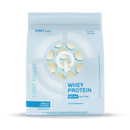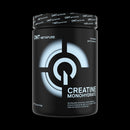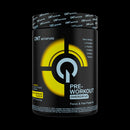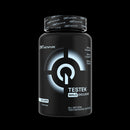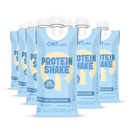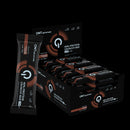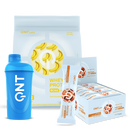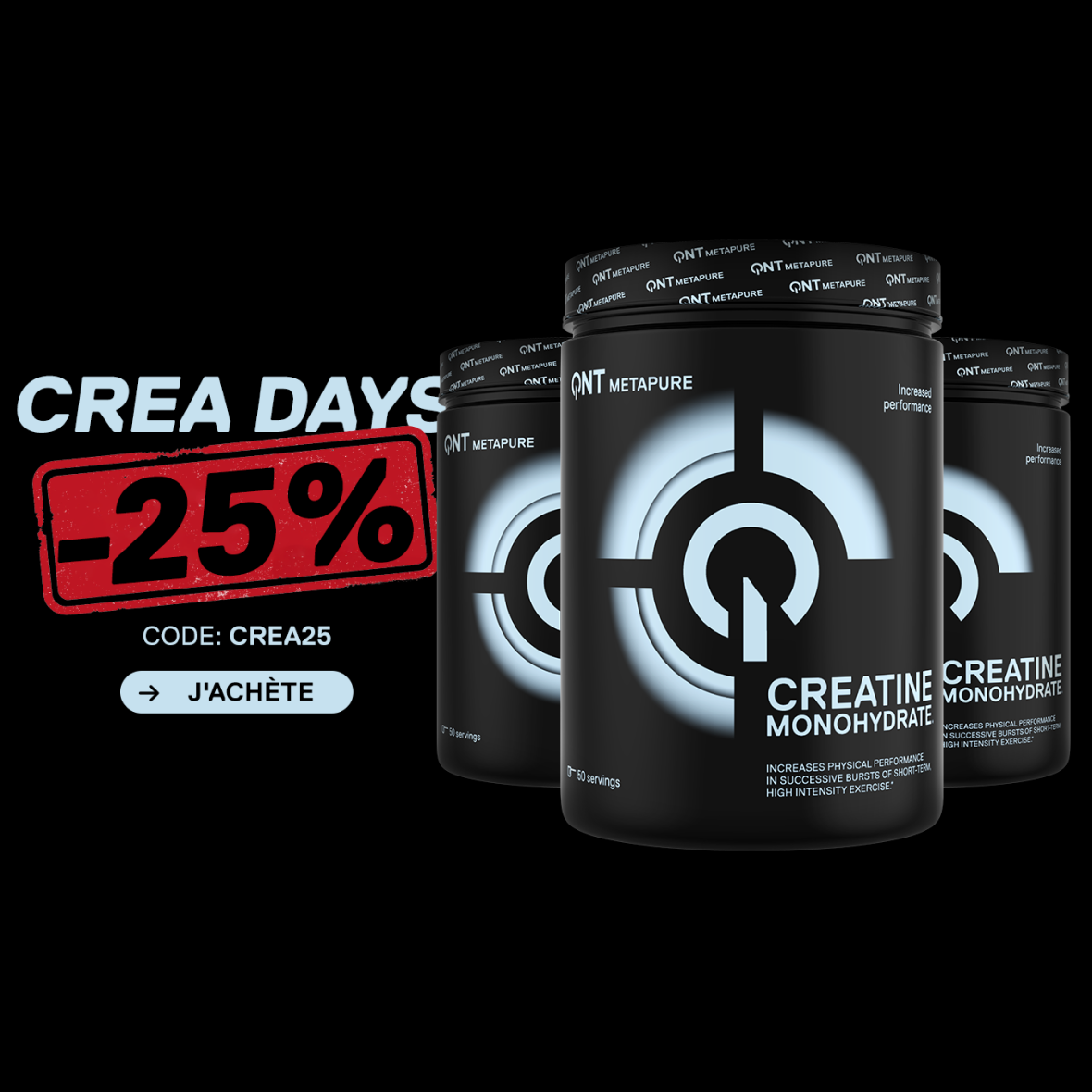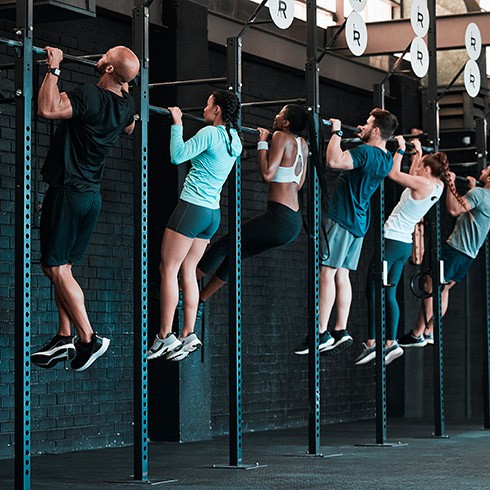Table of Contents
THE FUNDAMENTALS OF BODYBUILDING TO BOOST YOUR PERFORMANCE.
To reach your ideal form and unlock your full potential, weightlifting is your essential ally. But before diving headfirst into this world, it's crucial to master its fundamentals. These basics will allow you to build a solid, effective, and, most importantly, tailored routine to your personal goals. Here's how:
1. Define Your Goals.
Before anything else, ask yourself what you aim to achieve. Do you want to gain strength, endurance, muscle mass, or simply improve your overall fitness level? Your answer will guide your training plan and enable you to track your progress.
2. Adopt a Balanced Routine.
A effective weightlifting routine should target all major muscle groups: legs, back, chest, shoulders, arms, and abdominals. Vary the exercises to stimulate your body in a balanced way and prevent muscle imbalances.
3. Master the Technique.
Quality always trumps quantity. Proper technique not only maximizes the effectiveness of each movement but also significantly reduces the risk of injury. Don't hesitate to seek the help of a coach or consult reliable resources to learn the proper techniques.
4. Prioritize Progression.
To continue progressing, you must regularly increase the intensity of your workouts. This can mean adding weight, increasing the number of repetitions or sets, improving the quality of the exercise in its full range, or reducing rest times between sets.
5. Listen to Your Body.
Recovery plays a crucial role as important as the training itself. Allow yourself rest days and pay attention to your body's signals. Pain, excessive fatigue, or a decrease in performance may indicate a need for additional rest or an adjustment to your routine.
6. Nutrition and Hydration.
Your body needs fuel to perform and materials to rebuild. Make sure to consume a balanced diet, rich in proteins, complex carbohydrates, and healthy fats. Hydration also plays a crucial role in performance and recovery.
By incorporating these fundamentals into your weightlifting practice, you set yourself on the path to continuously improving your performance. Remember, each day is an opportunity to become a better version of yourself. With QNT by your side, equipped with the best supplements and expert support, you are ready to tackle any challenges and unleash your full potential.
IN WHICH SPORTS CAN WEIGHTLIFTING BE USEFUL ?
Weightlifting is a beneficial component for nearly all sports as it enhances athletes' strength, endurance, power, speed, and overall resilience. Here is a list of sports where weightlifting plays a crucial role in performance improvement:
1. Athletics.
- Sprinting and Speed Racing: Weightlifting increases power and explosiveness, essential for quick starts and maintaining high speed.
- Jumps (long jump, high jump): Improves leg power and explosive capability, crucial for longer and higher jumps.
- Throws (shot put, discus, javelin): Strengthens the muscles involved in throwing, thereby increasing throwing distance.
2. Combat Sports.
Boxing, MMA, Judo, etc.: Weightlifting enhances punching power, throwing power, and the ability to withstand opponent's grips and strikes.
3. Team Sports.
Football, Rugby, Basketball, etc.: Increases muscle strength, power, and endurance, allowing athletes to sprint faster, jump higher, and withstand physical contact.
4. Racket Sports.
Tennis, Badminton, Squash: Improves shot power, speed of movement on the court, and resistance to fatigue during long matches.
5. Cycling.
Specific weight training can increase pedaling power and endurance, allowing cyclists to maintain a high cadence for longer periods.
6. Swimming.
Strengthens the muscles of the upper body, improving pulling power and swimming speed.
7. Action Sports.
Skiing, Snowboarding, Surfing: Weightlifting improves balance, stability, and the strength needed to perform maneuvers and withstand forces exerted on the body.
8. Golf.
Improves swing power through better trunk and upper limb strength.
9. Climbing.
Strengthens the muscles of the arms, legs, and especially the trunk, essential for climbing efficiently and resisting fatigue during long or difficult ascents.
10. Gymnastics.
Weightlifting contributes to the strength, flexibility, and power necessary to perform complex routines and acrobatic movements.
11. Endurance Sports.
Triathlon, Marathon, etc.: Although the focus is on endurance, weightlifting can help improve running efficiency, prevent injuries, and enhance power for sprint phases.
12. Rowing.
Strengthens the back, shoulders, and arms, improving the power of each rowing stroke.
Weightlifting, when specifically tailored to the sport being practiced, can not only improve athletic performance but also contribute to better injury prevention. It enables athletes in all disciplines to develop a solid physical foundation, essential for achieving and maintaining a high level of performance.
TRAINING PLANNING: MAXIMIZING EFFICIENCY AND RESULTS.
To transform your potential into real performance, thoughtful and structured training planning is essential. Good planning allows you to maximize each session, achieve your goals more quickly, and reduce the risk of injury. Here's how to structure your planning to get the most out of your training:
1. Define Your Goals.
The first step is to know where you want to go. Your goals can vary: gaining muscle, losing weight, increasing strength, improving endurance, etc. Be specific, measurable, achievable, realistic, and time-bound (SMART) in defining your goals.
2. Assess Your Current Level.
Before diving into planning, honestly assess your current level of fitness. This will allow you to create a program tailored to your level and avoid overly ambitious plans that could lead to frustration or injury.
3. Structure Your Program.
A well-structured training program alternates between strength work, cardio, flexibility, and rest. The key is to find the right balance that fits your goals and schedule. Don't forget to include active recovery sessions and stretching to promote muscle recovery.
4. Diversify Your Workouts.
Variety in your training is not only key to maintaining your motivation but also essential for avoiding performance plateaus. Alternate between different types of exercises, intensities, and volumes to continually stimulate your body and mind.
5. Plan Training Cycles.
Periodization involves dividing your program into phases or cycles (preparation, competition, recovery). Each phase has specific objectives and associated types of training. This approach optimizes performance gains while minimizing the risk of overtraining.
6. Monitoring and Adjustments.
A good plan is a flexible plan. Monitor your progress and be ready to adjust your program based on your physical and mental responses. Using a training journal can be an excellent way to track your progress and identify areas requiring adjustments.
7. Listen to Your Body.
The golden rule of any training program is to listen to your body. If you experience excessive fatigue, pain, or if you're not achieving your goals as expected, it may be time to review your planning.
By following these steps to plan your training, you put yourself in a strong position to achieve and even exceed your goals. The key is to stay committed, be patient, and remember that significant progress takes time. With thoughtful training planning, you not only maximize the effectiveness of each session but also ensure steady progression towards the best version of yourself.
Don't forget, the journey to self-improvement is as important as the destination. Each workout is an opportunity to push yourself, learn, and grow.
WEIGHTLIFTING AND SPORTS PERFORMANCE: UNDERSTANDING THE LINK.
Weightlifting is often associated with the image of athletes seeking to develop their muscle mass. However, its impact goes far beyond that, significantly influencing overall sports performance. Understanding the link between weightlifting and sports performance is essential for any athlete looking to improve their abilities. Here's how weightlifting acts as a performance lever :
1. Improvement of Strength and Power.
Weightlifting increases muscle strength, which directly translates into improved power. In sports requiring explosive movements, such as sprints, jumps, or throws, this increase in power can make a significant difference in performance.
2. Injury Prevention.
A well-designed weightlifting program not only strengthens muscles but also tendons, ligaments, and bones. This contributes to better joint stability and a reduced risk of injuries, allowing athletes to train more consistently and effectively.
3. Improvement of Muscular Endurance.
Weightlifting is not just synonymous with brute strength; it also improves muscular endurance. Athletes who can maintain a high level of performance over longer periods benefit from a clear competitive advantage in their discipline.
4. Energy Efficiency.
A well-developed and well-trained musculature is more energy-efficient. Athletes can thus achieve higher performances while consuming less energy, which is crucial in endurance sports.
5. Improved Coordination and Stability.
Weightlifting contributes to improving intermuscular coordination and body stability. These improvements are particularly beneficial in sports that require a high level of precision and balance, such as gymnastics, surfing, or skiing.
6. Optimization of Body Composition.
By increasing muscle mass and reducing body fat percentage, weightlifting optimizes the athlete's body composition. An optimized body composition can improve speed, agility, and overall performance.
7. Improvement of Confidence and Mindset.
The benefits of weightlifting are not limited to the physical aspect. Progress made in the gym can also strengthen self-confidence and forge a winning mindset, essential for facing and overcoming sporting challenges.
8. Better Recovery After Injury.
A toned musculature often helps better withstand injuries and provides better support for recovery after an accident or injury-related issue.
By incorporating weightlifting into their training, athletes from all disciplines can not only improve their sports performance but also their resilience, health, and overall well-being. It is a powerful tool that, when used correctly, can help unlock the full potential of every athlete.
ADVANCED TECHNIQUES TO INCREASE STRENGTH AND ENDURANCE.
For athletes seeking to push their limits, adopting advanced techniques can be the key to unlocking higher levels of strength and endurance. These methods, although more complex, offer significant gains when thoughtfully integrated into a training program. Here are some advanced techniques to help you reach your goals:
1. Plyometric Training.
Plyometrics involves explosive exercises that improve muscle power, speed, and endurance. Jumps, sprints, and dynamic movements are at the core of this technique, which aims to maximize the force of contraction through a rapid cycle of muscle stretching and contraction.
2. High-Intensity Interval Training (HIIT).
High-Intensity Interval Training (HIIT) alternates between periods of intense effort and periods of recovery or light effort. This method boosts both muscle strength and cardiovascular endurance while promoting fat loss.
3. Progressive Overload Training.
Progressively increasing the load or resistance is fundamental to continue gaining strength. This can involve adding weight, increasing the number of repetitions, or reducing rest times between sets.
4. Supersets and Dropsets Training.
Supersets involve performing two exercises back-to-back without rest, often for opposing or complementary muscle groups. Dropsets consist of gradually reducing the weight used in an exercise until exhaustion. These techniques increase training intensity, thus stimulating muscle strength and endurance.
5. Using Periodization.
Periodization is the planning of training in cycles, with phases dedicated to different objectives (strength, power, endurance). This approach optimizes performance by preparing the body to reach its peak fitness at the desired time.
6. Cross-Training.
Cross-training combines different forms of exercise to improve overall fitness. By incorporating varied activities such as swimming, cycling, and running, you can enhance your endurance while reducing the risk of repetitive injuries.
7. Advanced Recovery Techniques.
Recovery plays an equally important role as training itself. Techniques such as ice baths, compression, massage, or cold therapy can accelerate muscle recovery, enabling faster gains in strength and endurance.
By integrating these advanced techniques into your training, you can not only improve your strength and endurance but also reach new levels in your sports performance. Remember, experimentation and adaptation are key: listen to your body and adjust your program based on your responses to continue progressing.
Injury Prevention: Tips for Safe Weightlifting Practice.
Weightlifting, when done correctly, can not only improve your strength and fitness but also contribute to overall better health. However, like any physical activity, there is a risk of injury. Here are essential tips to minimize this risk and ensure safe and effective weightlifting practice:
1. Full Warm-up.
Always start your sessions with a full warm-up. This prepares your body for physical exertion by increasing body temperature and improving blood circulation to the muscles. A good warm-up may include light cardio and dynamic exercises specific to the movements you plan to perform.
2. Master the Technique Before Increasing the Load.
Technique is paramount in weightlifting. Before considering increasing the weights, make sure you master the form and movement of each exercise perfectly. Poor technique not only reduces the effectiveness of the exercise but also significantly increases the risk of injury.
3. Gradual Progression.
Increase the intensity of your workouts gradually. Progressive overload is a key principle for muscle development, but increasing weights too quickly can lead to injuries. Listen to your body and progress at a pace that allows you to maintain good form.
4. Use Proper Equipment.
Protective equipment, such as lifting belts, wrist wraps, or proper shoes, can help prevent certain injuries. Also, ensure that the equipment you use is in good condition and suitable for the exercise you are performing.
5. Include Flexibility and Mobility Exercises.
Incorporating stretching and mobility exercises into your routine can improve flexibility, reduce muscle tension, and increase range of motion, thereby reducing the risk of injuries.
6. Listen to Your Body.
Learn to recognize the signals your body is sending you. Pain, excessive fatigue, or a decrease in performance may indicate that you need rest or that you are pushing your body beyond its current limits.
7. Schedule Rest Periods.
Recovery plays a crucial role as important as the training itself. Muscles need time to recover and rebuild after exertion. Make sure to include rest days in your training schedule to give your body the opportunity to fully regenerate.
8. Hydration and Nutrition.
Proper hydration and adequate nutrition play a crucial role in injury prevention. They support muscle recovery, strengthen the immune system, and help maintain overall bodily tissues in good health.
9. Avoid overtraining !
Overtraining is a physical and psychological state that occurs when the volume or intensity of training exceeds the body's recovery capacity. Recognizing the early signs of overtraining is crucial to prevent injuries, chronic fatigue, and underperformance. Here are the key warning signs to watch out for:
- 1. Persistent Fatigue.
- 2. Decreased Performance.
- 3. Sleep Problems.
- 4. Prolonged Muscle and Joint Pain.
- 5. Increased Frequency of Injuries.
- 6. Mood Swings.
- 7. Changes in Appetite and Body Weight.
- 8. Increased Resting Heart Rate.
- 9. Decreased Immunity.
If you experience one or more of these signs, it's important to take immediate action to allow your body to recover. This may include reducing the intensity and volume of training, increasing rest and sleep, improving nutrition and hydration, and, if necessary, consulting with a healthcare professional or sports coach. Recognizing and responding to signs of overtraining is essential for maintaining a healthy and sustainable sports practice.
By following these tips, you can significantly reduce the risk of injuries and fully enjoy the benefits of weight training. Remember, prevention is the key to a safe and sustainable practice.
Nutrition and Supplementation for Weight Training: What You Need to Know.
A balanced diet and thoughtful supplementation play a crucial role in the success of any weight training program. They provide the energy needed for workouts, support muscle recovery, and help achieve body composition goals. Here are the essential elements to know to optimize your nutrition and supplementation in weight training:
1. The Importance of Macronutrients.
- Proteins: Proteins are the building blocks of muscles. They are essential for muscle repair and growth after training. Sufficient protein intake is crucial, with quality sources such as lean meat, fish, eggs, dairy products, or plant-based proteins.
- Carbohydrates: Carbohydrates provide the energy needed for intense weightlifting sessions. They also aid in muscle recovery by replenishing glycogen stores. Opt for complex carbohydrates like whole grains, legumes, and vegetables.
- Fats: Good fats support hormonal health, essential for muscle growth and recovery. Include sources of healthy fats in your diet such as avocados, nuts, seeds, and vegetable oils.
2. Hydration.
Hydration is often underestimated in bodybuilding. Drinking enough water is vital for maintaining performance during training, facilitating recovery, and supporting essential bodily functions.
3. Supplementation.
Although most of your nutritional needs should be met through a balanced diet, some supplements can be beneficial:
- Protein Powder: Convenient for meeting your daily protein needs, especially after training to support muscle recovery.
- Creatine: One of the most studied supplements, creatine can improve strength, power, and muscle performance.
- BCAAs (Branched-Chain Amino Acids): Can support muscle recovery and reduce fatigue during training.
- Omega-3: Omega-3 fatty acids can help reduce inflammation and support cardiovascular and joint health.
4. Nutritional Timing.
The timing of your nutritional intake can also play a role in optimizing your results. Consuming protein and carbohydrates before and after training can enhance performance, support muscle recovery, and facilitate muscle growth.
5. Listen to Your Body.
Nutrition and supplementation are highly individualized. What works for one person may not work for another. Listen to your body, adjust your nutrition and supplementation based on your individual responses, and don't hesitate to consult with a sports nutritionist for personalized advice.
By incorporating these principles of nutrition and supplementation into your workout routine, you'll be setting yourself up for success in achieving your fitness and performance goals. Remember, a balanced diet, adequate hydration, and thoughtful supplementation are the cornerstones of effective training and optimal recovery.
COACH'S TIPS.
- Strength training is a significant asset for progress in most sports. It helps strengthen the body, improve recovery, and overcome plateaus in specific sports.
- For older individuals, strength training also helps maintain greater tonicity and therefore better health, where other sports become too stressful for joints or tendons.
Yves Bondroit coach for QNT.
Read more
 Training
TrainingGroup classes more effective than classroom work?
We often ask this question: which one is the most effective? Group training or individual workout programs in the gym? Let's first consider the two...
Summer body edition for men: How to prepare your body?
Gentlemen ? The return of the sun and its warm rays are almost here! The degrees are slowly but surely rising, but what about your muscles? Ouch! I...
 Training
TrainingSHOULD YOU USE A WEIGHT BELT FOR LIFTING?
The next person you see in the squat cage with 20 kg on the bar and a big belt, maybe you can make a comment after reading these few lines.
 Our Tips
Our TipsHow to train flexibility?
The way to train flexibility is often highly controversial. Depending on the sports you practice, you work differently. A dancer and an athlete tra...
 Dietary Supplements
Dietary SupplementsWhy take turmeric?
There are hundreds and hundreds of spices with different properties and turmeric is obviously one of them! It is a spice that is generally quite we...
Which fat burner to choose?
To lose weight and burn fat, there is no secret: you have to do sport and take care of your diet. However, it is possible to speed up the process t...
 Our Tips
Our TipsFasting and sport: 9 tips for training during Ramadan.
Working out during Ramadan is not easy. Not eating from sunrise to sunset is a major challenge for athletes wishing to continue their activities. T...
 Our Tips
Our TipsSummer holidays: How to limit the damage?
On holiday, we often tend to let ourselves go. Unless you're a hardcore sportsman, you tend to abandon your trainers and indulge in a lot of dietar...
 Health
HealthHow to preserve your joints?
We have a total of about 400 joints located throughout the body. We therefore quickly understand why joint problems are quite common. You don't hav...
 Our Tips
Our Tips9 good reasons to do sport.
Sometimes the urge to exercise is not always there. And although we always tell ourselves that this year will finally be the right one to get back ...

